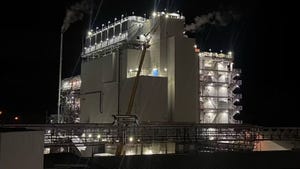D-
That’s the grade given to the U.S.’s drinking-water system by the American Society of Civil Engineers (ASCE) in its 2009 infrastructure report card. Excluding growth, the ASCE report says America needs to spend an additional $11 billion/yr just to comply with existing and future federal water regulations. A big reason we’re flirting with an F—we lose an estimated 7 billion gallons of clean drinking water/day to leaky pipes.
January 30, 2009
That dripping should sound like an opportunity for the plastics industry, specifically pipe extruders, who can position plastic pipes as a sounder alternative to metal and concrete competition. The Plastics Pipe Institute does just that, calling plastic pipe “a sustainable and environmentally responsible choice” that is strong, durable, lightweight, and flexible, using less energy to fabricate, transport, and install, while offering superior resistance to corrosion and abrasion. High-density polyethylene (HDPE) has been used in drinking water applications for almost 50 years and in sewer pipe applications for more than 30 years.
Suppliers sense an opportunity with Bob Bessemer, product manager downstream extrusion at The Conair Group (Cranberry Township, PA), telling MPW that some of the proposed economic stimulus infrastructure spending could be a boon for pipe. “Given that hopefully the government is going to be spending some infrastructure dollars,” Bessemer said, “I think there’s going to be a lot people interested in big pipe.”
Considering that out of 15 categories, the highest grade given by the ASCE was a C+, there are likely opportunities beyond pipe for plastics in infrastructure..—[email protected]
About the Author(s)
You May Also Like


